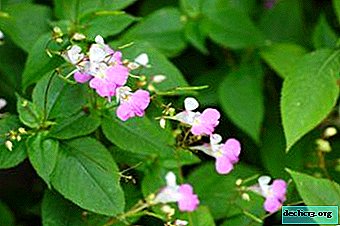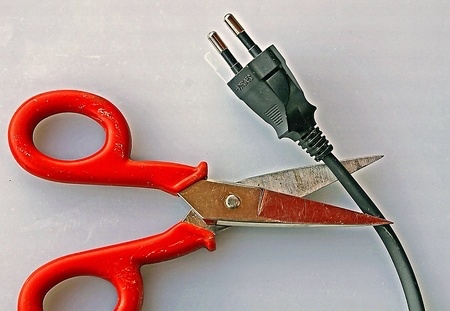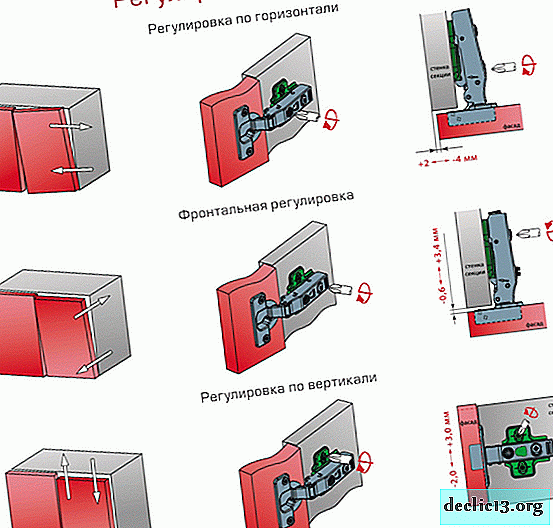Diseases and pests of violets and methods of dealing with them
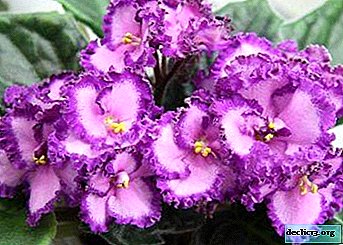
Violet is one of the most popular types of indoor plants. They appreciate her for delicate and graceful flowers, which, with proper care, will delight with their bright colors almost all year round.
But lush flowering can overshadow the diseases and pests that occur mainly due to improper care.
In the article we will tell you what rules and nuances of plant care you need to know. What violets can hurt. And also, what parasites can destroy the plant.
Inaccuracies in care
If the leaves on the violet become dull and small, then the reason is the lack of light. Because of this, the petioles begin to lengthen, the edges of the leaf plates bend upward. You can normalize the condition of the plant if you put the pot on a lighted window sill, protected from drafts.
The lack of blooming violets occurs due to increased acidity or salinization of the soil, improperly selected composition of the substrate. This can lead to a complete cessation of the formation of peduncles and curling leaves. A similar symptomatology occurs with an imbalance in the mineral composition (for example, with a lack of nitrogen).
Important! Light spotting on the leaves indicates irregular watering.Such a reaction of the plant signals too cold water or a burn, which occurs due to the ingress of sunlight on the wet surface of the leaf plate. This can be avoided if the soil is moistened with warm water and a fan when the likelihood of a burn is minimal.
Learn more about competent care at home, the features of proper cultivation and propagation of a flower, learn from this article.
Diseases and treatments
Why do not grow and what should be done?
 The most common cause of stunted violets is improper irrigation, an improper earthen mixture. This is what badly affects the state of the root system, which is why the flower stops its development. You can stop this process and restore the growth of violets using the following methods:
The most common cause of stunted violets is improper irrigation, an improper earthen mixture. This is what badly affects the state of the root system, which is why the flower stops its development. You can stop this process and restore the growth of violets using the following methods:
- Additionally, add the Zircon preparation under the root and spray the plant once a week with water from a fine spray.
- During transplantation, use peat moss substrate.
- For constant moisture use wick irrigation. This is especially true in spring and summer.
- With the onset of spring, so that the plant blooms as soon as possible, pour hot water (40 degrees) into the pan. This is an excellent stimulation of flowering.
Leaves turn yellow
Why do the leaves turn yellow? Yellowing of the leaves may occur for the following reasons:
- water scarcity;
- lack of nutrients;
- shaded flower growing area;
- low or too high acidity in the pot.
To apply fungicides in this case there is no sense.
Note! Proper growth conditions will help prevent and stop yellowing of the leaves.Diseases
Fusarium
This disease leads to decay of the violet outlet. The reason is improper care of the plant. The Fusarium fungus seeps into the young roots of the flower and its further rotting occurs. Petioles begin to turn brown and fall off, and the roots become dark in color, and are no longer able to hold the plant in the ground.
 To prevent the development of fusarium, the following rules must be observed:
To prevent the development of fusarium, the following rules must be observed:
- Watering should not be frequent and plentiful.
- Do not weight the soil at the place where the violets grow.
- Do not plant the plant in too large a container.
- Avoid sudden temperature jumps in the room with the plant.
- Pour over warm water.
The therapy is based on fungicides, and remove the affected parts of the plant. For prevention, you can pour the violet with a solution of Fundazole.
Powdery mildew
If white flakes have formed on the leaves of the plant, and the plant looks a little dusty, then these are clear signs of powdery mildew.
Indoor violets are most often affected by this disease. White spots defeat the stems and flower. The following factors can affect the development of powdery mildew:
- lack of sunlight;
- increased humidity in the room (above 60%);
- cold air;
- dustiness and pollution of the plant and pot;
- lack of phosphorus and potassium in the soil, as well as an excess of nitrogen.
To prevent the development of powdery mildew, the following recommendations should be observed:
- Wipe the leaves of the flower with a damp cloth;
- the room should be clean and the air fresh.
If a whitish coating appears on the violets, then treat the plant with Benlat or Fundazol. After 1.5 weeks, repeat the treatment. After improvement, it is important to follow preventive measures. To do this, organize watering with water, the temperature of which is not lower than room temperature.
You can overcome the disease with a solution of copper sulfate. Pour 5 g of the product with 200 ml of hot water. Separately, dissolve 10 g of soap in 1 liter of water. Combine two solutions. Treat the violet 3 times with an interval of 6-7 days.
Late blight
This disease is very dangerous, but arises as a result of the penetration of fungal parasites into the body of the plant. They penetrate the violet through microcracks in the leaves or through the roots. After affection with fungi, the root neck begins to rot. You can recognize the disease by the presence of brown spotting on the leaves.
Important! Fungal spores can live in the soil for a long time, so the sterilization of the flower pot remains the main stage of prevention.The treatment of late blight is not carried out, since the affected flower must be removed and burned. You can prevent the development of the disease if you create normal humidity in the room and add superphosphates to the soil.
Gray rot
 The second name for the disease is botritis. With damage to all parts of the plant, a gray coating forms, resulting in violet tissue rot. The affected flower dies quickly, and it is impossible to save it.
The second name for the disease is botritis. With damage to all parts of the plant, a gray coating forms, resulting in violet tissue rot. The affected flower dies quickly, and it is impossible to save it.
The fungus penetrates the plant through the old soil. So for prevention, filter the soil with a potassium permanganate solution before sending the plant to it. It is necessary to prevent frequent and sharp temperature surges, as well as to limit watering.
To combat gray rot, it is effective to use folk remedies. Dissolve 10 g of mustard powder in 1 liter of hot water. insist 2 days. Dilute the resulting solution with 1 liter of water. Apply to the treatment of diseased plants with an interval of 10 days.
Rust
It affects the disease after infection with rust fungi. The main symptoms of rust are the presence of orange tubercles on the top of the leaf. Brown pads form on the inside. Because of this, the leaves crack, die off and fall off. Mushrooms affect only the living parts of the violet, and for their rapid ripening, moisture is required.
Reference. The temperature regime of 10-20 degrees of heat can affect the development of fungi.For the treatment of rust, fungicide treatment, a 1% solution of Bordeaux liquid or sulfur dust is used.
Vascular bacteriosis
This disease makes itself felt in the hot season. The lower leaves of the flower are covered with mucus and die over time. For treatment, such drugs are used:
- Fundazole.
- Zircon.
- Previkur.
- Immunocytophyte.
In addition, the room to cool the air and improve ventilation.
Violets began to languish and hurt. What to do and how to treat:
Parasites
Ticks
Violet can affect various types of ticks:
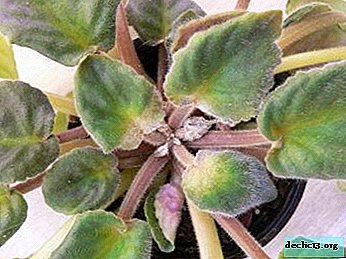 Red spider web. This pest eats plant juice. Its dimensions are small: females - 0.5 mm purple-red, males: 0.3 mm, bright red. The red spider mite is fertile, actively propagates at elevated temperatures. This insect covers the plant with red dots and wraps it in patina. Leaves curl and die.
Red spider web. This pest eats plant juice. Its dimensions are small: females - 0.5 mm purple-red, males: 0.3 mm, bright red. The red spider mite is fertile, actively propagates at elevated temperatures. This insect covers the plant with red dots and wraps it in patina. Leaves curl and die.- The usual spider mite. Sizes of females from 0.4 to 0.6 mm, male - from 0.3 to 0.45 mm. Soft-bodied parasites of ellipsoid shape, they have a convex upper and flat lower body. It feeds on the juice of the plant, as a result of which the leaves are covered with brown depressions.
- Cyclamen tick. The body length in females is 0.20-0.25 mm, in males - about 0.15 mm. The parasite is characterized by an oval translucent yellowish body with four pairs of paws. Attacks young leaves in the center of the outlet. Because of this, they take an unnatural shape and become covered with yellow spots.
These pests reduce the growth rate of the flower, the stem is shortened, the leaves die off, the buds do not open and are deformed. For treatment, treatment with Acaricide is used with an interval of 7 days.
Treatment of violets from a tick. Why pick off flower stalks:
Scaffolds and false shields
These insects do great harm to violets.
On a note. You can recognize the defeat by the presence of yellow spots on the leaves.They increase in size as the juice is exhausted. After this, the leaf completely turns yellow and falls off. Violet growth stops, the branches are exposed, and then the bush dries.
You can distinguish a scab from a false scab by the following signs:
- On top of the shield is a shield. He does not part with the insect inside. It is easy to determine this if you open the shield. The parasite will be attached to the plant.
- The visor differs in shape too: in the insects it is flat, and in the false insects it is in the shape of a pea.
For treatment, such drugs are used:
- Actellik. Dilute 1 ampoule in 1 liter of water. Treat the plant 4 times with an interval of 3 days.
- Fosbezid. To treat these drugs outdoors, as it is toxic. In 10 liters of water, take 20 ml of the product.
Thrips
These are small flying "insects." They have a dark brown body color. They feed on violets. You can determine the defeat by the presence of a dark brown color. Brown or black spots also form. The following drugs are used for treatment:
- Fitoverm.
- Actelik.
- Actar.
Thrips on violets. We fight with thrips:
Nails
These are small white parasites that look like a caterpillar. Ahead they have a noticeable small antennae. The size of the nails is no more than 5 mm. They settle on the surface of the soil, like dampness and multiply rapidly.
Attention! The violet insect does not cause much harm, but if the lesion is massive, then it harms the roots.For processing, use a solution of Pyrethrum, as well as thoroughly dry the soil.
Nematodes
 These are small worms. They live in the soil. Defeat the root system of the plant, sucking out useful juices from it. In addition, parasites produce toxic substances. Noticing the pest is not so simple. only during a flower transplant, inspecting the roots, you can see small worms.
These are small worms. They live in the soil. Defeat the root system of the plant, sucking out useful juices from it. In addition, parasites produce toxic substances. Noticing the pest is not so simple. only during a flower transplant, inspecting the roots, you can see small worms.
The nematode contributes to the presence of dark green spots on the leaves. They darken and expel over time. Violets affected by nematodes grow poorly, weaken and do not give buds. There are no drugs to combat parasites. Discard the flower with soil, and treat the container with a potassium permanganate solution.
Worm
This insect is highly mobile. They move well at almost any age. Their body is covered with white powdery waxy coating. Sizes 3-6 mm. The insect leads to deformation of the plant, it becomes covered with red-brown spots. You can determine the infection with these insects by smell. During the transplant, the soil will emit an unpleasant mushroom aroma. If you perform a more detailed inspection, then you can see the worms themselves, which have white fluff.
For treatment, such drugs are used:
- Actellik.
- Fitoverm.
- Actar.
Transplant the affected plant into a new substrate and carefully remove the remains of the old.
Aphid
These insects have a sucking mouthpart. It has the appearance of a proboscis, with the help of which the parasite punctures the surface tissues of plants and gets to the juices. Aphids are white, black or brown. It can be winged and wingless.
On violets, these insects affect peduncles, flowers and buds. After their influence, the leaves of the plant are deformed and fade.
Reference. If there are a lot of aphids, then it forms a white layer of sticky liquid on the leaves. For treatment use Mospilan and Actellik.Woodlice
These are tiny land crustacean parasites. In appearance, they look like small armadillos. For their reproduction, the following conditions are considered ideal: increased humidity and loose soil. These white parasites cause damage to the roots and leaves of the violet. They are especially dangerous for young plants. Acaricides are used for treatment.
Mosquitoes and midges
 These parasites are formed mainly in waterlogged and overripe land. Adult individuals do not have any trouble with violets, which cannot be said about their larvae. They quickly destroy the soil, traumatize the roots, reduce access to oxygen and greatly compact the soil. To combat insects, treat the soil with a solution of Karbofos. In addition, anoint the edge of the pot with chalk from the cockroach, and dust the top layer of the ground with crumbs. To remove adults, use the aerosol Reid, Dichlorvos.
These parasites are formed mainly in waterlogged and overripe land. Adult individuals do not have any trouble with violets, which cannot be said about their larvae. They quickly destroy the soil, traumatize the roots, reduce access to oxygen and greatly compact the soil. To combat insects, treat the soil with a solution of Karbofos. In addition, anoint the edge of the pot with chalk from the cockroach, and dust the top layer of the ground with crumbs. To remove adults, use the aerosol Reid, Dichlorvos.
In case of severe infection of the soil, completely replace it in the pot. Finish the substrate to calcine in the oven. This will kill the still not decomposed remains of plants, which attracts these flies and mosquitoes. In the future, try not to overmoisten the soil.
Greenhouse whitefly
This is a small butterfly that settles on the inside of the leaves. Over time, insect stool is formed on the lower leaves, presented as a brilliant plaque. After a while, a sooty fungus forms on it. Because of this, all the elements of the plant brighten, and the shoots stop their growth.
To overcome parasites, complex therapy is required. To do this, use the following drugs:
- Fitoverm.
- Akarin.
- Actofit.
To carry out processing with an interval of 7 days.
Violet is a very moody plant. It should be grown by a person with a certain experience. The fact is that all diseases and pests are formed precisely due to non-compliance with the rules of agricultural technology. But if the lesion was detected on time, then the plant can still be saved and continue to enjoy its lush and bright flowering.

 Red spider web. This pest eats plant juice. Its dimensions are small: females - 0.5 mm purple-red, males: 0.3 mm, bright red. The red spider mite is fertile, actively propagates at elevated temperatures. This insect covers the plant with red dots and wraps it in patina. Leaves curl and die.
Red spider web. This pest eats plant juice. Its dimensions are small: females - 0.5 mm purple-red, males: 0.3 mm, bright red. The red spider mite is fertile, actively propagates at elevated temperatures. This insect covers the plant with red dots and wraps it in patina. Leaves curl and die.